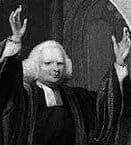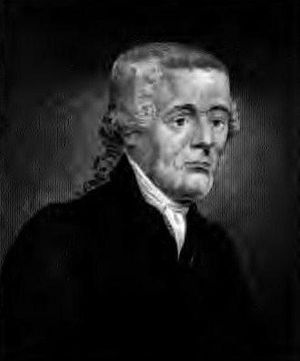It cannot be denied that there was a dreadful spiritual decline among the churches during the period between the Puritans and Methodists. Attention has been drawn to this by many historians.
But it needs to be emphasised that this was not until after the death of Queen Anne in 1714 and occurred only among particular denominations. In other areas there was growing prosperity. This neglected fact raises important questions.
The English Presbyterians
Most of the 2,000 ministers ejected in 1662 were Presbyterians. Many of the ejected ministers were still able to preach to large congregations but when they passed away they were often succeeded by men of a different character.
These could imitate their predecessors in the length and weight of their discourses, but not in their power. Coldness and formality replaced evangelistic fervour and spiritual zeal. Eventually, the Presbyterian congregations shrank in size and number.
By 1715 they were reduced to 600. Evangelical Presbyterianism became worldly and respectable. The Presbyterians lost many ministers to the Church of England, together with large numbers from their congregations.
A few sought refuge among the Independents, where they could be sure of an orthodox ministry. In the Salters Hall controversy of 1719, the Unitarian views of a small number of prominent Presbyterians in the West Country were exposed. But tolerance of these views by others was also made plain.
Men who had hitherto concealed their heresies now became bold, and false teaching came in like a flood. Fifty-five years later the English Presbyterian denomination was reduced to three hundred congregations, with greatly reduced attendance.
Assistance
Samuel Palmer’s London Manuscript provides an interesting commentary on this process. When he visited London in 1731, signs of decay were clearly visible. Over half of the Presbyterian churches were no longer Calvinistic. Nearly all the young ministers had embraced Arminianism, which led to Unitarianism. Congregations were generally in decline.
Devon provides a terrible example of what was happening. Exeter was the centre of false teaching and though there were nearly 100 ejected Presbyterian ministers in the county, this witness eventually disappeared. The churches became either Unitarian or Independent.
Eventually, English Presbyterianism virtually ceased to exist. The testimony was not finally extinguished because Scottish Presbyterians, who were very different from their English brethren, came to the assistance of the denomination in the north-east.
The Independents
While the Presbyterians were declining, the Independents remained free from error and gradually increased. Bogue and Bennett assert: ‘There was a great multitude of flourishing congregations in most parts of the country which was increasing with a steady progress. This was so remarkable in the case of Northampton and neighbouring countries that Doddridge, in answer to Mr Gough [a Presbyterian who complained about the decay among Dissenters], says “I know that in many of the congregations the number of Dissenters is greatly increased within these twenty years, and the interest continues … to flourish”.’
Independent churches were, in fact, growing throughout the country. They had reached 270 congregations in 1715, and doubled over the next fifty years. This contrast between spiritual decay among the Presbyterians and prosperity among the Independents is dealt with at some length by Bogue and Bennett.
‘Among the Independents the state of religion was so much more favourable that it might justly excite in every area a desire to know whence the difference did proceed. Instead of the diversity of sentiments, which prevailed among the Presbyterians, the religious principles of the Nonconformists were maintained by the Independents in all their purity.
‘It may be questioned whether the Arian or even the Arminian was to be found in the whole body. There was no denomination in England, which could boast of such unanimity of doctrine. Of the orthodoxy, their system of church government may be justly assigned as one powerful cause.
‘An Independent church is, in its very nature, a society of converts … None are admitted into that communion but such as can give satisfactory evidence that they have believed in Christ and repented of their sins, and walk as becometh the Gospel’.
Thorough procedures
The historians go on to say that from 1662 to the time of their writing in 1838, all but a few of the Independent congregations had a continued succession of gospel witness. In the case of Anglicans and Presbyterians, there had scarcely been any who maintained such a continued witness.
The important point made by Bogue and Bennett, that the Independents differed from the Presbyterians in their insistence on a regenerate church membership, comes out strongly in the London Manuscript.
The Presbyterians were careless about those they admitted to communion. Indeed, ‘some Presbyterians admitted persons into their communion by their minister’s sole authority without acquainting the people with so much as their names’.
On the other hand, the procedure adopted by the Independents could not have been more thorough. The whole congregation had to be satisfied that all was well. With regard to discipline, ‘The Presbyterians very rarely, if ever, as a church enquire into the conduct and behaviour of their members, and it is a thing almost seldom known that they discharge any of them for heresy or disorderly walking’.
The writer goes on to explain the extraordinary care taken to preserve the purity of the Independent congregation. In doctrine, the Independents in London were Calvinists to a man. The contrast between these two denominations was very real.
The Baptists
The General Baptists were in steady decline. They were Arminian, succumbed to Unitarianism, and eventually died out, being replaced by a different Arminian group.
The Particular Baptists, on the other hand, flourished in a similar manner to the Independents. Bogue and Bennett tell us that the Particular Baptists ‘were all Calvinists but, from want of an education for the ministry, many of them were not very judicious and some of them abused their doctrine … On the whole, the orthodox doctrine prevailed among the Particular Baptists, and its influence appeared in the increase of many of their congregations, and in the establishing of new ones in different parts of the country’.
Hypercalvinism was beginning to emerge but was in the early stages. Apart from a few cases it did not damage the churches and its influence in this period has been exaggerated. Rippon’s Register of Particular Baptist churches confirms that Particular Baptist churches were flourishing throughout the country.
About a score had sprung up since the beginning of the century. Between 1689 and the emergence of Whitfield, seventy had spring up. Bogue and Bennett comment on their zeal: ‘Most probably their piety was in uniform to that of their predecessors in respect of the measure of vital godliness which prevailed in their congregations and was displayed in the lives of individuals’.
Accounts of advance
All this may sound very different from Baptist histories, but a negative view of this period has often been based in inaccurate statistics. Joseph Ivimey makes his negative comment about this period on the basis of a thoroughly inaccurate statement by John Ryland of the number of Particular Baptist churches in 1753.
Frequently, congregations were omitted because it was difficult to obtain accurate figures. It is much easier now to get a clear picture of the steady increase in the number of churches than it was in earlier days. Indeed, recent research has given some astonishing vindication of the numbers of churches that were established in the early eighteenth century.
Unitarianism flourished in the West Country but a circular letter of the western Baptist Association meeting in 1719 stated that none of the churches were infected with this pestilential heresy.
‘We have great cause to rejoice that in this degenerate state of the churches the Great Adversary hath not had so great power as to break in upon and divide in all the churches to which we are related for, to the joy of our souls, we find them all in peace among themselves and some of them increasing their number rather than decline’.
This same association reported in 1730: ‘From some of our churches we have received accounts of considerable advance to their number in the year past’.
Moral decadence
Some may be sceptical about all I have written because of the undoubted immoral condition of the country at the time of the Evangelical Awakening. It has been widely asserted that things must have been bad in the churches because they were bad in the country.
It does not follow, however, that because the Evangelical Awakening transformed the country at large, the salt had lost its savour. The witness of the Dissenters was simply unwanted. They were excluded from positions of influence in the country.
The Unregistered Baptist Churches in Russia maintained a wonderful testimony during the second half of the twentieth century, but they had little influence on society in Russia. They were despised and rejected. When looking at history we must be sure of our primary sources before we make general assertions.
We have a rich heritage, and can be encouraged as we look closely at it. Just as the doctrine of the Puritans and the evangelistic fervour of the Methodists challenge us, so should the church life of the Dissenters speak to us.


















